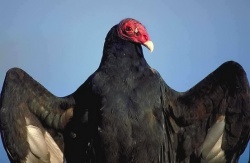The Assembly at Vulture Peak: The Eighteen Arhats
After his enlightenment, Sakyamuni Buddha frequently visited Mount Gridhrakrta near Rajagrha, the capital of Magadha where he gathered an assembly of disciples and propagated his teachings. This mountain is called the Vulture Peak because of the shape of its peak. Each time when the Buddha was there, his disciples of monks and arhats, Boddhisattvas of foreign lands, incalculable numbers of gods, dragons, yaksas, asuras, and other sentient beings would gather at the same locale and listen attentively to the Buddha's teachings of the Dharma, hence the Assembly at Vulture Peak.
In order for Buddha to flourish after his time, and that sentient beings be given the opportunity to understand and follow the Buddhist Dharma, Sakamuni Buddha thus ordered his sixteen arhats to remain in this world, dwell in different lands, and disseminate his teachings to benefit all sentient beings. After the arrival of Buddhism in China, these sixteen arhats became the source of creative ideas for several local artists who subsequently added the number of arhats to eighteen. Arhats refers to those who had extinguished all defilements and suffered afflictions. They had benefited themselves and severed all bonds of existence. They were conversant with the true teachings and had reached the other shore, never to be subject to the relentless cycle of birth and death. As their cultivation is complete and their righteousness exemplary, these saints are worthy of offerings from sentient beings.
